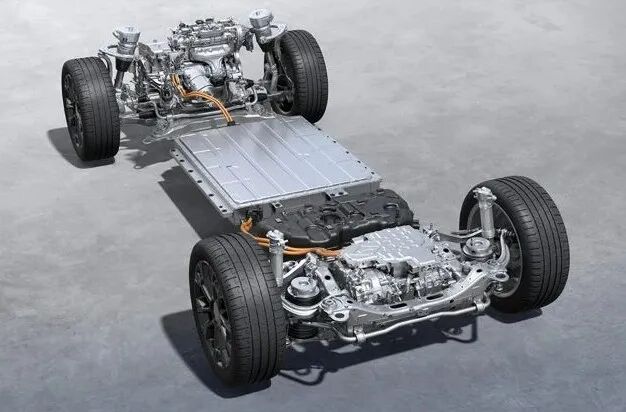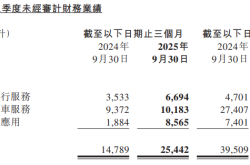Analysis of the Pros and Cons of Utilizing Magnesium-Aluminum Alloy in Electric Drives for New Energy Vehicles
![]() 10/13 2025
10/13 2025
![]() 578
578

I. Key Advantages of Employing Magnesium-Aluminum Alloy in the Lynk & Co 900's Electric Drive
The Lynk & Co 900 made its official debut on April 28, 2025. From a technical standpoint, the magnesium-aluminum alloy employed in the Lynk & Co 900's electric drive system achieves numerous breakthroughs in lightweight design, performance, and cost through the inherent benefits of the material and process innovation. The specific advantages are outlined as follows:

1. Ultimate Lightweight Design: Weight Reduction for Enhanced Efficiency and Indirect Range Optimization
The most prominent advantage of magnesium-aluminum alloy lies in its 'lightweight' characteristic. Its density is merely two-thirds that of aluminum and one-fourth that of steel, even lighter than some engineering plastics. When applied to the electric drive system (such as the electric drive housing), it can achieve a weight reduction of 20%-30%. In certain technical solutions, the overall weight of the system is reduced by approximately 25% compared to traditional aluminum alloy electric drive systems, with the weight reduction of a single housing reaching 2.5 - 7 kilograms. For new energy vehicles, weight reduction in the electric drive system is of paramount importance. Research data indicates that for every 10% reduction in vehicle weight, the driving range can increase by 6%-8%. The lightweight property of magnesium-aluminum alloy directly 'boosts' the range performance of the Lynk & Co 900.
2. Comprehensive Performance Upgrade: Balancing Strength, Heat Dissipation, and NVH
High Strength and Impact Resistance
Magnesium-aluminum alloy is not 'light but fragile'. Its mechanical strength can reach 3.3 times that of traditional aluminum alloy, and its capacity to absorb impact loads is increased by a hundredfold, offering both high stiffness and excellent impact resistance. This characteristic ensures the structural stability of the electric drive system under complex road conditions (such as bumps and collisions), preventing housing deformation from damaging internal motor and electronic control components.
Efficient Heat Dissipation
The thermal conductivity of magnesium-aluminum alloy surpasses that of most aluminum alloys. Some magnesium alloy systems can reach a thermal conductivity of 100 - 126 W/mK (over 80% of traditional materials), enabling rapid heat conduction generated during the operation of the electric drive system. This prevents motor performance degradation due to high temperatures while reducing the load on the cooling system, indirectly enhancing electric drive efficiency.
Optimized NVH Performance
Magnesium-aluminum alloy exhibits excellent damping and vibration reduction properties. It effectively absorbs vibrations from motor operation and road transmission, reducing noise generated by the electric drive system and creating a quieter and more comfortable cabin environment. This aligns with the Lynk & Co 900's high requirements for driving experience as a mid-to-high-end SUV.
3. Process and Cost Advantages: High Feasibility for Mass Production and Outstanding Cost-Effectiveness
Strong Process Adaptability
Magnesium-aluminum alloy boasts excellent casting fluidity. When combined with advanced processes like semi-solid injection molding, it allows for the manufacture of complex thin-walled structural components. It even enables 'integrated molding', which not only reduces the number of components in the electric drive system (lowering assembly and material management costs) but also enhances overall system durability. Material utilization also increases from 65% in traditional processes to 85%.
Cost Controllability
In recent years, magnesium prices have remained lower than aluminum prices, establishing a cost advantage at the raw material level. Simultaneously, as the industrial chain matures (for example, die-casting giants and mainstream automakers increasing their investments), economies of scale further reduce costs. Compared to traditional aluminum alloy electric drive housings, magnesium-aluminum alloy solutions can reduce costs by approximately 40%, achieving a balance between performance and cost-effectiveness.
4. Additional Advantages: Environmental Friendliness and Functional Adaptability
Strong Recyclability
Magnesium-aluminum alloy has a high recycling value. Its recycling process is simple, reducing resource waste and environmental pollution, which is in line with the 'low-carbon and environmentally friendly' development direction of new energy vehicles.
Electromagnetic Shielding
Magnesium-aluminum alloy offers excellent electromagnetic shielding performance. It protects the internal precision electronic components of the electric drive system from external electromagnetic interference while preventing electromagnetic radiation generated by motor operation from affecting other electronic devices in the vehicle, ensuring the stable operation of the entire vehicle's electronic system.

II. Disadvantages of Applying Magnesium-Aluminum Alloy in Electric Drive Systems
Although magnesium-aluminum alloy offers lightweight advantages, it has several drawbacks in terms of material properties, production processes, and practical applications, as detailed below:
1. Extremely Poor Corrosion Resistance, Requiring Additional Treatment and Limiting Lifespan
Magnesium-aluminum alloy is chemically highly reactive and ranks among the 'metals with the poorest corrosion resistance'. The main issues are as follows:
Firstly, it has high corrosion rates. Its corrosion rate is 10 - 30 times that of aluminum alloy. In humid atmospheres, industrial environments (containing sulfur dioxide), and marine environments (containing chlorides), a loose and porous oxide film (such as MgCO3HO, MgSO7HO, Mg(OH)) forms on the surface, failing to effectively block ongoing corrosion.
Secondly, it is susceptible to stress corrosion cracking (SCC). Under the combined effects of external stress (such as vibrations and temperature changes in the electric drive system) and corrosive environments, the material is prone to cracking, directly affecting the structural stability and lifespan of electric drive components (such as housings and protective plates).
Thirdly, additional costs are incurred for treatment. To mitigate corrosion issues, surface treatments such as 'coating passivation, oiling, and wax paper wrapping' are necessary, increasing production processes and costs.
2. Shortcomings in Mechanical Properties, Inadequate Toughness and Ductility
Although magnesium-aluminum alloy approaches aluminum alloy in strength, it has significant gaps in key mechanical properties:
Firstly, it has low tensile strength and fatigue resistance. Both its tensile strength and fatigue resistance are lower than those of aluminum alloy. When subjected to long-term vibrations and torque impacts from the electric drive system, it is prone to deformation or fatigue damage.
Secondly, it has poor toughness and ductility. The material is prone to fracture under external impact, making it difficult to adapt to the 'high-load, complex operating conditions' of the electric drive system and limiting its application in core components (such as transmission structures) that 'withstand significant forces or impacts'.
3. Subpar Thermal Stability, Prone to Dimensional Instability at High Temperatures
Magnesium-aluminum alloy has a high coefficient of linear expansion, leading to poor dimensional stability in high-temperature environments generated during electric drive system operation. This may not only cause abnormal clearance between components (such as sealing failure between the housing and internal motor and electronic control components) but also affect processing rhythm (requiring adjustments to process parameters to control dimensional accuracy under high temperatures), indirectly reducing production efficiency. Additionally, its melting point is only 463°C. Although this exceeds the normal operating temperature of the electric drive system, there is a risk of material performance degradation under extreme conditions (such as cooling system failures).
4. High Process and Production Thresholds, Limiting Cost and Scale
The processing and production of magnesium-aluminum alloy involve issues of 'equipment dependence and high technical requirements':
Firstly, there are stringent process requirements. Although advanced processes like 'semi-solid injection molding' can address traditional casting defects, these processes demand extremely high precision in equipment and control over process parameters, requiring support from professional technical teams.
Secondly, there is equipment dependence on imports. Currently, most dedicated injection molding equipment for magnesium-aluminum alloy production on the market is imported, with scarce domestic alternatives. This not only drives up equipment investment costs but also limits the rapid expansion of production scale.
Thirdly, there are high overall costs. The stringent requirements in equipment investment, surface treatment, and process control result in significantly higher production costs for magnesium-aluminum alloy components compared to traditional materials (such as aluminum alloy). Although lightweight design can indirectly reduce costs, it is difficult to offset the initial investments in the short term.







